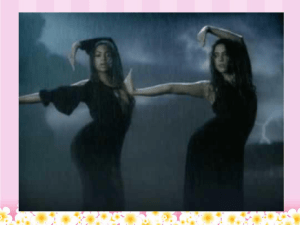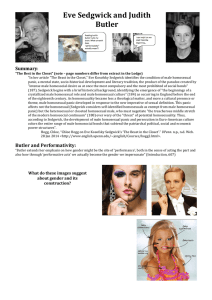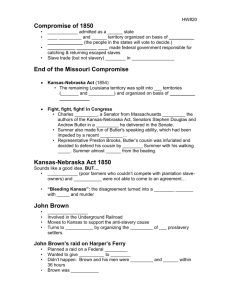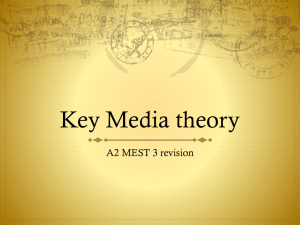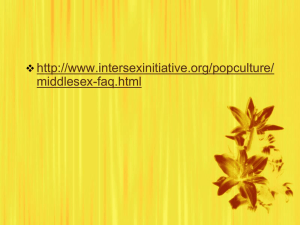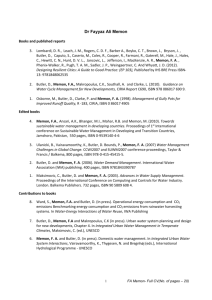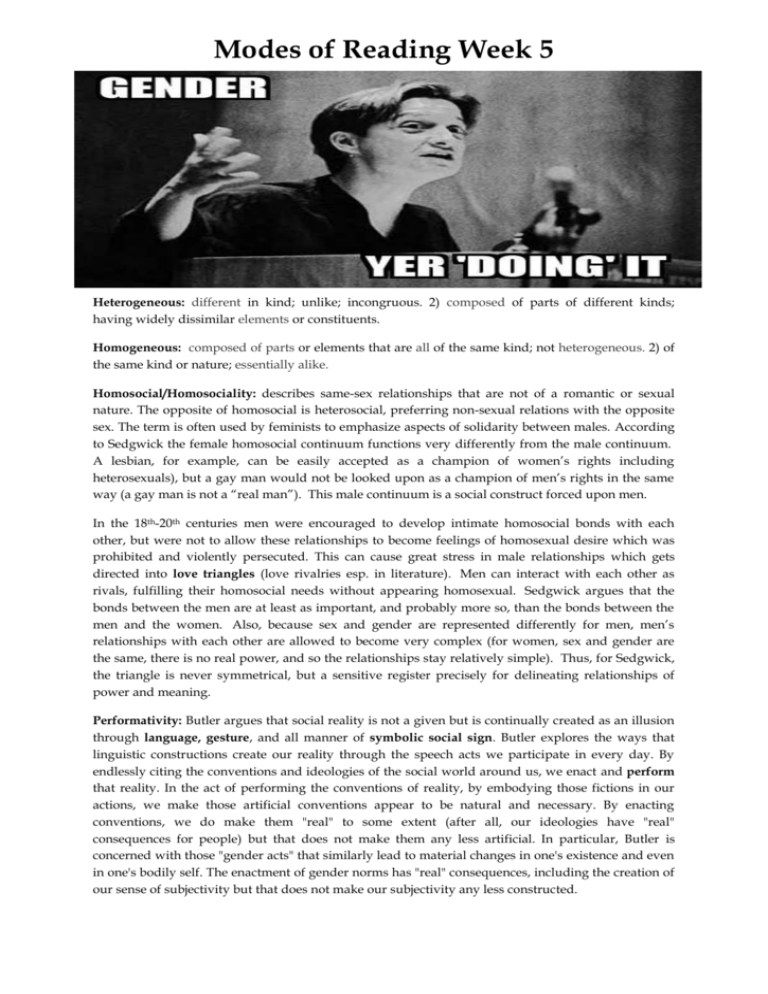
Modes of Reading Week 5
Heterogeneous: different in kind; unlike; incongruous. 2) composed of parts of different kinds;
having widely dissimilar elements or constituents.
Homogeneous: composed of parts or elements that are all of the same kind; not heterogeneous. 2) of
the same kind or nature; essentially alike.
Homosocial/Homosociality: describes same-sex relationships that are not of a romantic or sexual
nature. The opposite of homosocial is heterosocial, preferring non-sexual relations with the opposite
sex. The term is often used by feminists to emphasize aspects of solidarity between males. According
to Sedgwick the female homosocial continuum functions very differently from the male continuum.
A lesbian, for example, can be easily accepted as a champion of women’s rights including
heterosexuals), but a gay man would not be looked upon as a champion of men’s rights in the same
way (a gay man is not a “real man”). This male continuum is a social construct forced upon men.
In the 18th-20th centuries men were encouraged to develop intimate homosocial bonds with each
other, but were not to allow these relationships to become feelings of homosexual desire which was
prohibited and violently persecuted. This can cause great stress in male relationships which gets
directed into love triangles (love rivalries esp. in literature). Men can interact with each other as
rivals, fulfilling their homosocial needs without appearing homosexual. Sedgwick argues that the
bonds between the men are at least as important, and probably more so, than the bonds between the
men and the women. Also, because sex and gender are represented differently for men, men’s
relationships with each other are allowed to become very complex (for women, sex and gender are
the same, there is no real power, and so the relationships stay relatively simple). Thus, for Sedgwick,
the triangle is never symmetrical, but a sensitive register precisely for delineating relationships of
power and meaning.
Performativity: Butler argues that social reality is not a given but is continually created as an illusion
through language, gesture, and all manner of symbolic social sign. Butler explores the ways that
linguistic constructions create our reality through the speech acts we participate in every day. By
endlessly citing the conventions and ideologies of the social world around us, we enact and perform
that reality. In the act of performing the conventions of reality, by embodying those fictions in our
actions, we make those artificial conventions appear to be natural and necessary. By enacting
conventions, we do make them "real" to some extent (after all, our ideologies have "real"
consequences for people) but that does not make them any less artificial. In particular, Butler is
concerned with those "gender acts" that similarly lead to material changes in one's existence and even
in one's bodily self. The enactment of gender norms has "real" consequences, including the creation of
our sense of subjectivity but that does not make our subjectivity any less constructed.
Misc Notes
Eve Sedgwick (Lodge 31)
Eve Kosofsky Sedgwick, writer and literary theorist, born 2 May 1950; died 12 April 2009
(breast cancer)
One of the sharpest and most committed exponents of queer theory, the exploration of
sexual perspectives other than that of conventional straightness in literature and the
humanities. Though herself heterosexual, she was fascinated by the complex nature of
relationships and desire, declaring herself proud of "having a life where work and love are
impossible to tell apart".
Queer theory rejects labels such as gay and straight, referring instead to a sense of identity
that subverts presumed norms and social codes. Sedgwick and her colleagues recognised
social perceptions of sexuality as worthy of contemplation, drawing inspiration from the
French philosopher Michel Foucault, and with roots in both the gay and lesbian studies of
the 1980s and traditional literary academia. To Sedgwick, "queer" was "the open mesh of
possibilities, gaps, overlaps, dissonances and resonances, lapses and excesses of meaning
when the constituent elements of anyone's gender, of anyone's sexuality aren't made (or
can't be made) to signify monolithically".
“It’s about trying to understand different kinds of sexual desire and how the culture defines
them,” she told The New York Times in 1998, explaining the function of queer theory. “It’s
about how you can’t understand relations between men and women unless you understand
the relationship between people of the same gender, including the possibility of a sexual
relationship between them.”
Her first book, Between Men: English Literature and Male Homosocial Desire (1985),
explored male bonds in 19th-century novels, considering authors such as Dickens and the
"erotic triangles" of homosexual, homosocial and homophobic relations depicted.
Sedgwick's ideas are perhaps best outlined in Epistemology of the Closet (1990),
acknowledged by many, including her fellow pioneer in queer theory Judith Butler, as a
founding text of the field.
"An understanding of virtually any aspect of modern western culture must be, not merely
incomplete, but damaged in its central substance to the degree that it does not incorporate a
critical analysis of modern homo/heterosexual definition."
Misc Notes
Judith Butler (Lodge 38)
Butler argued that feminism had made a mistake by trying to assert that 'women' were a
group with common characteristics and interests. That approach, Butler said, performed 'an
unwitting regulation and reification of gender relations' -- reinforcing a binary view of
gender. Rather than opening up possibilities for a person to form and choose their own
individual identity, therefore, feminism had closed the options down.
Butler notes that feminists rejected the idea that biology is destiny, but then developed an
account of patriarchal culture which assumed that masculine and feminine genders would
inevitably be built, by culture, upon 'male' and 'female' bodies, making the same destiny
just as inescapable. That argument allows no room for choice, difference or resistance.
Butler prefers 'those historical and anthropological positions that understand gender as a
relation among socially constituted subjects in specifiable contexts'. In other words, rather
than being a fixed attribute in a person, gender should be seen as a fluid variable which
shifts and changes in different contexts and at different times.
Butler argues that sex (male, female) is seen to cause gender (masculine, feminine) which is
seen to cause desire (towards the other gender). This is seen as a kind of continuum. Butler's
approach -- inspired in part by Foucault -- is basically to smash the supposed links between
these, so that gender and desire are flexible, free-floating and not 'caused' by other stable
factors.
Butler says: 'There is no gender identity behind the expressions of gender; ... identity is
performatively constituted by the very "expressions" that are said to be its results.' (Gender
Trouble, p. 25). In other words, gender is a performance; it's what you do at particular times,
rather than a universal who you are.
Butler suggests that certain cultural configurations of gender have seized a hegemonic hold
(i.e. they have come to seem natural in our culture as it presently is) -- but, she suggests, it
doesn't have to be that way. Rather than proposing some utopian vision, with no idea of
how we might get to such a state, Butler calls for subversive action in the present: 'gender
trouble' -- the mobilization, subversive confusion, and proliferation of genders -- and
therefore identity.
Butler argues that we all put on a gender performance, whether traditional or not, anyway,
and so it is not a question of whether to do a gender performance, but what form that
performance will take. By choosing to be different about it, we might work to change gender
norms and the binary understanding of masculinity and femininity.
This idea of identity as free-floating, as not connected to an 'essence', but instead a
performance, is one of the key ideas in queer theory. Seen in this way, our identities,
gendered and otherwise, do not express some authentic inner "core" self but are the
dramatic effect (rather than the cause) of our performances.
David Halperin has said, 'Queer is by definition whatever is at odds with the normal, the
legitimate, the dominant. There is nothing in particular to which it necessarily refers. It is an
identity without an essence.'
It's not (necessarily) just a view on sexuality, or gender. It also suggests that the confines of
any identity can potentially be reinvented by its owner...

